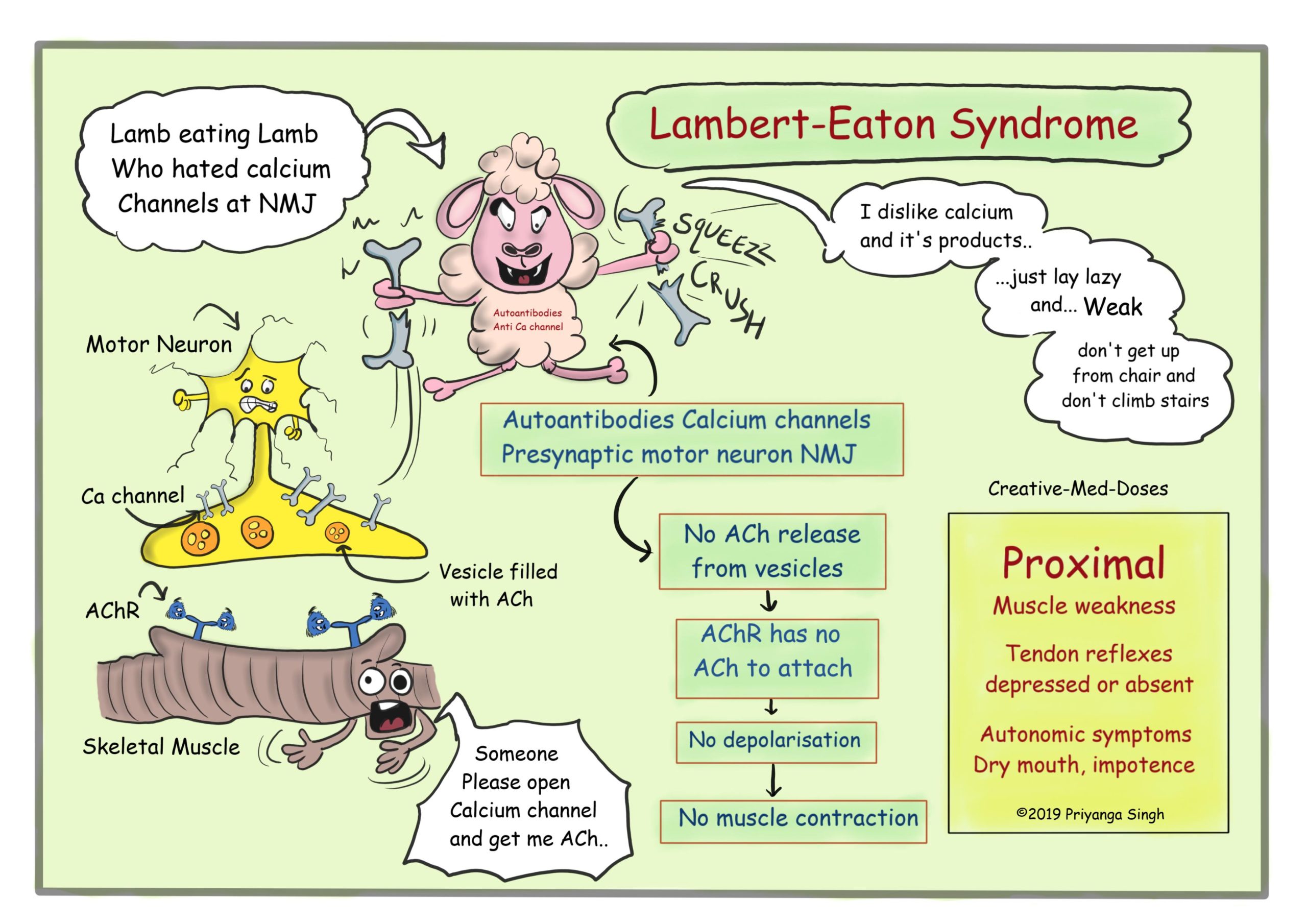Lambert Eaton syndrome: NMJ disorder
Lambert Eaton syndrome is a neuromuscular junction (NMJ) disorder characterized by
- proximal muscle weakness,
- decreased deep tendon reflexes
- autonomic symptoms (dry mouth, impotence)
...

(Lamb represent Autoantibodies and bones represent Calcium channels
...
Pathogenesis
- The immune system attacks the calcium channels on presynaptic motor neuron. With fewer calcium channels there is reduced release of acetylcholine. Acetylcholine is a chemical messenger that triggers muscle contraction. The lowered levels of acetylcholine are not enough to cause normal muscle contractions, causing muscle weakness.
- It is most frequently associated with small-cell (Oat cell) lung cancer (most often caused by long-term cigarette smoking). It is thought that the body's attempt to fight the cancer inadvertently causes it to attack nerve endings because cancer cells share some of the same proteins as presynaptic neurons calcium channels. Lambert-Eaton syndrome is the most common neurological paraneoplastic syndrome. Diagnosis of LES may lead to the early detection of Small-cell carcinoma, as the clinical symptoms of LES frequently precede cancer detection.
Clinical Manifestation
- Proximal muscle weakness- difficulty rising from a chair and difficulty climbing stairs
- Autonomic symptoms- dry mouth and impotence
- Depressed or absent Tendon reflexes
- Muscle contractions improves after repeated use
Diagnosis
- Clinical examination
- History of smoking
- Negative edrophonium test
- Voltage-gated Ca2+ channel antibody assay
...

...
Treatment
Increase ACh release
- By increasing release from presynaptic vesicles- 3,4 Diamino pyridine (3,4 DAP)
- By inhibiting lysis by cholinesterase- Pyridostigmine
Reducing Autoantibodies for calcium channel
- Immunosuppression- Azathioprine
- Plasmapheresis
- Intravenous Immunoglobulin (IVIG)
Treatment of Small cell carcinoma - treat underlying malignancy to treat autoimmunity
- Revision for today https://creativemeddoses.com/topics-list/wilson-disease-copper-everywhere/